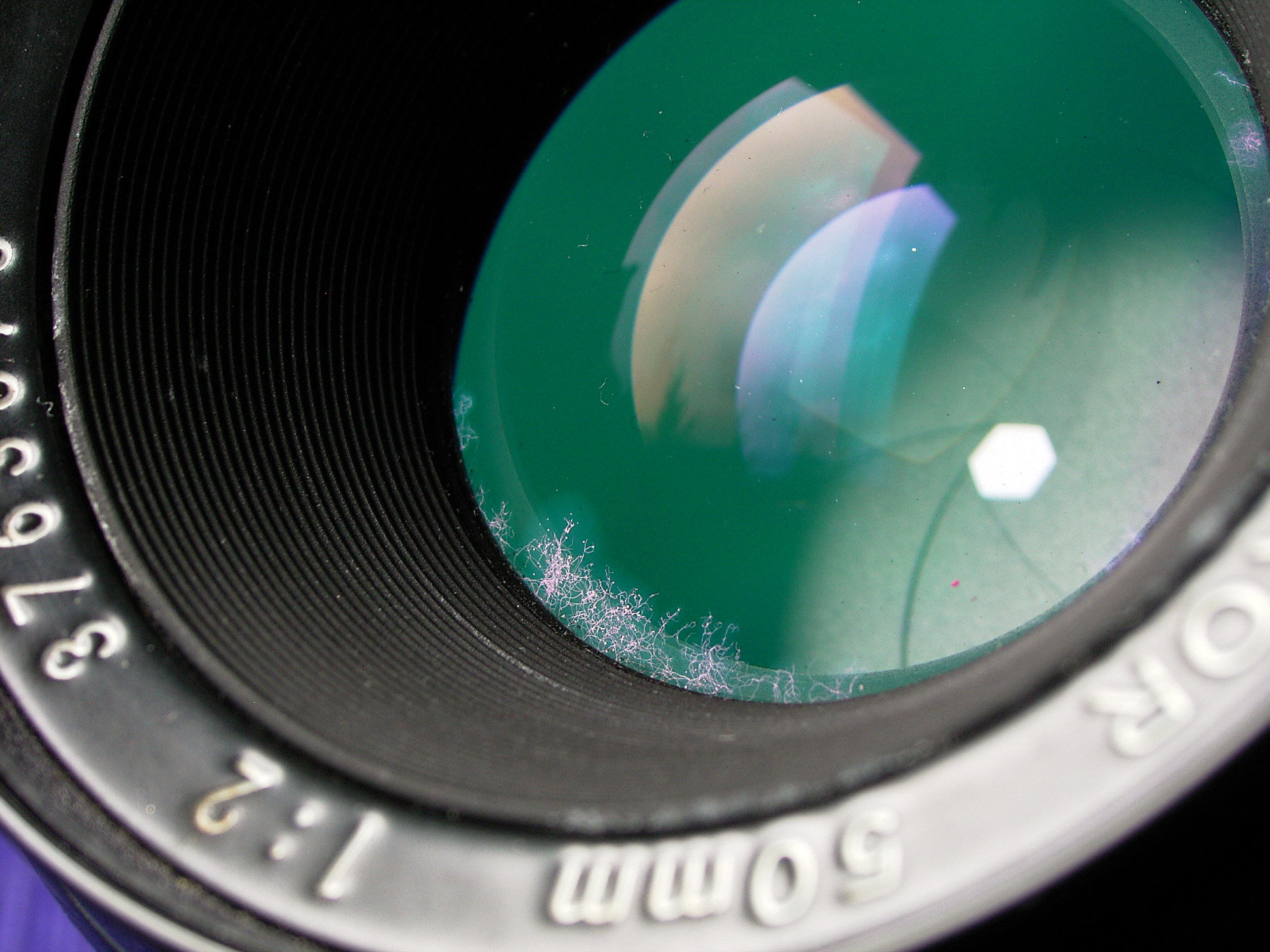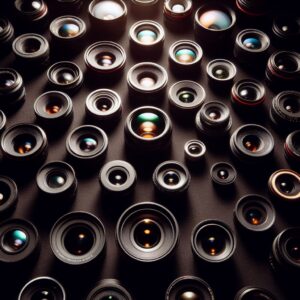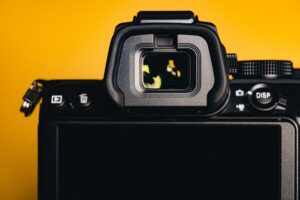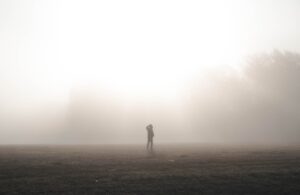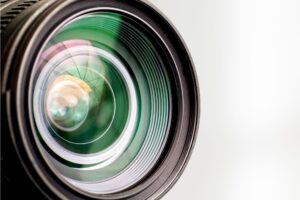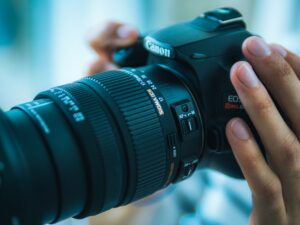Can you clean fungus from a camera lens? Yes, but it’s a little complicated.
Camera lens fungus is a photographer’s subtle enemy, creeping in unnoticed and wreaking havoc on image quality.
It forms as a result of moisture and lack of ventilation, gradually building up on your lens’ surface.
Ignoring it can lead to irreversible damage, making your once-crystal-clear shots look like they were taken through a foggy window.
Why should photographers be aware of lens fungus? Because a lens is not just a piece of glass; it’s the eye of your camera. Any imperfection can significantly affect your photography.
In this comprehensive guide, we’ll delve into the causes, removal, and prevention of lens fungus.
We’ll answer pressing questions like “Can lens fungus be removed?” and “How do you prevent lens fungus?” So let’s dive right in and tackle this pesky issue.
| Quick Info | |
|---|---|
| Topic | Camera Lens Fungus |
| Impact | Reduces Image Quality |
| Solution | Professional Cleaning, DIY Methods |
| Prevention | Regular Maintenance, Proper Storage |
Ready to conquer the fuzzy world of lens fungus? Keep reading!
What Actually Is Lens Fungus?
So, what is lens fungus? Lens fungus is a microbial growth that occurs on the surface of your camera lens.
Think of it as mold for your camera, but much sneakier. It thrives in humid, dark environments and is particularly fond of the organic materials used in older lenses.
If you’re wondering what lens fungus looks like, imagine tiny spiderwebs scattered across your lens. These webs can be sparse or densely packed, depending on how advanced the fungus is.
Did You Know?: Lens fungus is more common in older lenses. These lenses were often stored in less-than-ideal conditions, making them prime real estate for fungus growth.
How Does Lens Fungus Affect Image Quality?
- Blurred Images: The first thing you’ll notice is a slight blur in your photos.
- Reduced Sharpness: Fine details in your images will begin to soften.
- Decreased Contrast: Your photos may start to look washed out.
- Lens Damage: If left untreated, the fungus can etch into the lens, causing permanent damage.
By now, you should understand that lens fungus is not just an aesthetic issue; it severely affects the quality of your photos.
If you’re keen on achieving those crisp, professional shots, keeping your lens fungus-free is a must.
Tip: Always check the quality of a lens before purchasing, especially if it’s a used lens. Learn how to check a lens for quality issues in our article on how to check camera lens quality.
| Lens Fungus Characteristics | |
|---|---|
| Appearance | Tiny spiderwebs on the lens surface |
| Common in | Older Lenses |
| Effect on Image Quality | Blurs images, reduces sharpness, decreases contrast |
Can Lens Fungus Be Treated?
The question of can lens fungus be removed is a bit like asking if you can fix a flat tire—yes, you can, but how you go about it makes all the difference.
DIY Method: Removing Fungus from the Outer Surface
If you notice that the lens fungus is only on the external glass, you can attempt to clean it yourself.
Here’s a step-by-step guide on how to do it:
- Gather Supplies: Get a lens cleaning kit, which should include a soft lens brush, microfiber cloth, and lens cleaning solution.
- Use the Brush: Gently brush away any loose fungus spores, taking care not to scratch the lens.
- Apply Cleaning Solution: Put a few drops of lens cleaning solution on a microfiber cloth (never directly on the lens).
- Wipe Carefully: Use the dampened cloth to wipe the lens in a circular motion, working from the center outward.
- Inspect: Look at the lens under a bright light to make sure all visible fungus is removed.
Tip: If you’re unsure about the right cleaning solutions, our article on how do you clean a camera lens can provide some insights.
Risks of Using Alcohol and UV Rays
- Alcohol: Some photographers resort to using alcohol-based cleaners to remove stubborn fungus. Be cautious; although effective, alcohol can strip away lens coatings.
- UV Rays: Exposing the lens to UV rays can kill the fungus, but excessive exposure may deteriorate the lens.
These methods come with a “use at your own risk” caveat. They can be effective, but they can also cause damage if not used carefully.
Professional Cleaning for Internal Fungus
If the fungus has invaded the inner elements of the lens, DIY methods will not suffice. Here’s what you can expect from a professional cleaning service:
- Diagnosis: The lens will be inspected to assess the extent of the fungal growth.
- Disassembly: The lens will be carefully taken apart to access the affected areas.
- Cleaning: Specialized solutions and tools will be used to clean the lens elements.
- Reassembly and Testing: The lens will be reassembled and tested to ensure it functions correctly.
Note: Professional cleaning can be expensive, so always inquire about the cost beforehand.
| Treatment Methods | What to Expect |
|---|---|
| DIY Cleaning (Outer Surface) | Brush, wipe, inspect; risk of missing some spores |
| Alcohol and UV Rays | Effective but risky; potential lens damage |
| Professional Cleaning | Comprehensive; involves disassembly, cleaning, and testing |
How to Prevent Lens Fungus
Knowing how to prevent lens fungus is half the battle won. Prevention is always better than cure, especially when dealing with something as delicate as a camera lens.
Let’s walk through some essential preventive measures that can help keep your lens in pristine condition.
1. Carry Your Camera in a Safe Bag
Benefit: Protects your camera and lens from external elements like dust, moisture, and physical impact.
You’ve probably invested a good amount of money in your camera and lenses. So why skimp on a quality bag?
A good camera bag with padded compartments will protect your equipment from physical damage and keep it shielded from the elements.
Tip: Look for bags with weather-sealing for added protection.
2. Use a Rain Cover in Bad Weather
Benefit: Shields your lens from water damage during rain, snow, or fog.
Weather can be unpredictable. A rain cover is a quick and efficient way to protect your camera and lens from moisture.
It’s like an umbrella for your camera, preventing water droplets from reaching the lens surface.
Tip: Always carry a portable rain cover in your camera bag. You never know when you might need it.
3. Use a Lens Hood for Protection
Benefit: Reduces lens flare and provides an extra layer of physical protection for the lens.
A lens hood isn’t just for reducing lens flare; it also acts as a physical barrier, protecting your lens from accidental bumps and scrapes.
Moreover, it keeps water droplets and dust particles at bay, preventing them from settling on the lens surface.
Tip: A lens hood is a minimal investment for the level of protection it offers. It’s a must-have in your camera toolkit. Want to learn more? Check out our full guide here.
| Preventive Measures | Why It’s Important |
|---|---|
| Carry in a Safe Bag | Physical & Environmental Protection |
| Use a Rain Cover | Weather Protection |
| Use a Lens Hood | Lens Flare & Physical Protection |
4. Employ a UV Filter to Prevent Dust
Benefit: Protects the lens surface from dust, scratches, and minor impacts while blocking harmful UV rays.
Adding a UV filter is like putting a security screen on your home’s windows. It blocks harmful UV rays from entering the lens and also acts as a first line of defense against dust and minor scratches.
Tip: UV filters are relatively inexpensive compared to the cost of a lens. Consider it cheap insurance for your expensive glass.
5. Store Lenses in a Dry and Bright Place
Benefit: Minimizes the chance of fungus growth by providing an unfavorable environment for spores.
Dark and damp? That’s a recipe for lens fungus. Always store your camera gear in a dry, well-ventilated area.
Consider a dedicated storage solution like a dry box or a cabinet with a dehumidifier.
Tip: Learn more about lens storage in our comprehensive guide on how to store camera lenses properly.
6. Allow Lenses to Dry Out After Wet Conditions
Benefit: Prevents moisture from settling, thereby reducing the risk of fungus growth.
If you’ve been shooting in humid or wet conditions, don’t just stash your camera away. Let it dry out completely before storing it.
Use a soft, lint-free cloth to wipe down the lens and camera body.
Tip: Remove the lens cap and let the lens air dry to ensure all moisture evaporates.
7. Use Silica Gel for Moisture Control
Benefit: Absorbs moisture within the camera bag or storage box, making it less hospitable for fungus.
Silica gel packets are your new best friends. These small sachets can absorb moisture in the surrounding environment, making it less inviting for any spores looking for a new home.
Tip: Place silica gel packets in your camera bag and lens storage boxes for added protection.
| Preventive Measures | Why It’s Important |
|---|---|
| Employ a UV Filter | Dust & UV Protection |
| Store in Dry, Bright Place | Fungus Prevention |
| Dry Out After Wet Conditions | Moisture Control |
| Use Silica Gel | Absorb Excess Moisture |
8. Promptly Remove Dirt from the Lens
Benefit: Dirt can trap moisture, which can lead to fungus growth. Keeping the lens clean avoids this risk.
Any foreign particle on your lens can become a breeding ground for fungus. Always clean your lens after each use, especially if you’ve been out in dusty or sandy environments.
A lens cleaning kit with a soft brush and microfiber cloth should do the trick.
9. Avoid Touching the Lens with Dirty Hands
Benefit: Dirty hands can introduce oils and germs to the lens, which can attract more dirt and moisture.
Our hands carry natural oils and can collect dirt throughout the day. Touching your lens with dirty hands can transfer these oils and particles, making the lens a magnet for more dirt and, eventually, fungus.
Tip: Always wash your hands before handling your camera gear, or better yet, use a lens pen or brush for cleaning.
10. Prefer Using a Blower Over Blowing on the Lens
Benefit: Using a blower removes dust without introducing moisture, unlike blowing on the lens with your mouth.
Blowing on the lens might seem like a quick fix, but your breath contains moisture that can settle on the lens. Instead, use a blower to gently remove any dust or particles.
This method is not only more effective but also safer for your lens.
Tip: A blower can also be used to clean other parts of your camera. It’s a versatile tool to have in your camera bag.
| Preventive Measures | Why It’s Important |
|---|---|
| Promptly Remove Dirt | Avoids Moisture Trapping |
| Avoid Touching with Dirty Hands | Prevents Oil and Dirt Buildup |
| Use a Blower | Moisture-Free Cleaning |
FAQs
Is Removing Fungus from a Camera Sensor Possible?
Yes, it’s possible, but this is a delicate procedure best left to professionals. Unlike lens cleaning, sensor cleaning requires specialized tools and expertise.
Should You Purchase a Lens That Already Has Fungus?
Buying a lens with fungus is generally not advisable unless you’re prepared for the cleaning cost and risk of permanent damage to the lens.
What’s the Price Range for Lens Fungus Cleaning?
The cost can vary widely depending on the severity of the fungus and whether professional cleaning is needed. Prices can range from $50 to several hundred dollars.
Does Lens Fungus Spread Over Time?
Yes, if left untreated, lens fungus can spread across the lens and even to other parts of the camera, affecting image quality and lens functionality.
Is It Possible to Clean the Inside of a Camera Lens?
Yes, but cleaning the inside of a lens is complicated and should only be done by professionals. This often involves disassembling the lens.
How Quickly Can Fungus Develop on a Camera Lens?
The growth rate of lens fungus depends on environmental factors like humidity and temperature. In favorable conditions, it can start appearing in as little as a few weeks.
Can Alcohol Be Used to Clean Lens Fungus?
Alcohol can kill fungus, but it’s risky because it can also damage lens coatings. It should be used cautiously and as a last resort.
Are Modern Lenses Susceptible to Fungus?
Yes, while modern lenses often have better coatings and materials that resist fungus, they are not entirely immune, especially if stored improperly.
Can Fungus Move from One Camera to Another?
Yes, fungus spores can be transferred from one camera to another, especially if stored together in a moist, dark environment.
Is Cleaning the Camera Sensor Yourself a Good Idea?
Cleaning a camera sensor is a delicate task that can result in damage if not done correctly. It’s generally recommended to seek professional help for this.
Final Thoughts
We’ve covered a lot of ground today, from understanding what lens fungus is to discussing how to prevent lens fungus and its removal.
We’ve established that lens fungus is not just an eyesore; it’s a potential destroyer of image quality.
If you’re serious about photography, keeping your lenses free from fungus should be high on your maintenance checklist.
Here’s a quick recap of the key points:
- Lens Fungus: A microbial growth that affects the lens surface, looking like tiny spiderwebs and significantly reducing image quality.
- Removal: While it’s possible to remove fungus from the lens surface, internal lens fungus often requires professional cleaning.
- Prevention: From using UV filters to storing your lenses in dry places, there are numerous ways to prevent lens fungus from forming.
Maintaining a clean lens is not just about avoiding fungus; it’s about ensuring that your camera performs at its best, delivering high-quality images that make your photography stand out.
After all, in photography, every detail counts, right down to the cleanliness of your lens.


